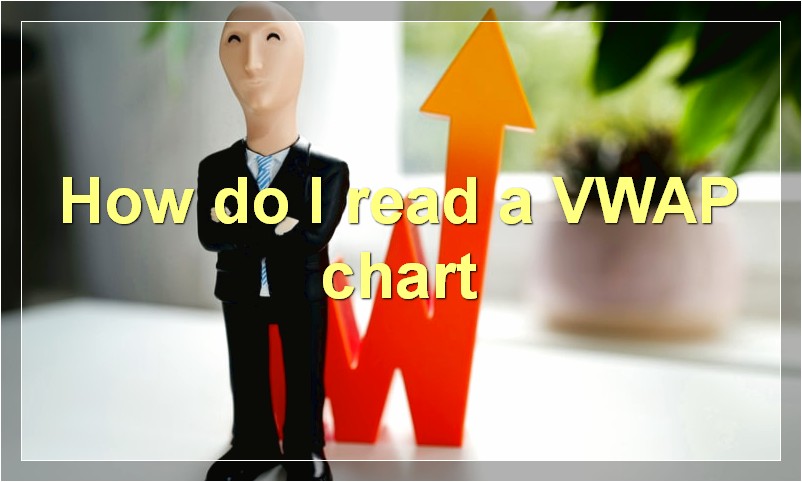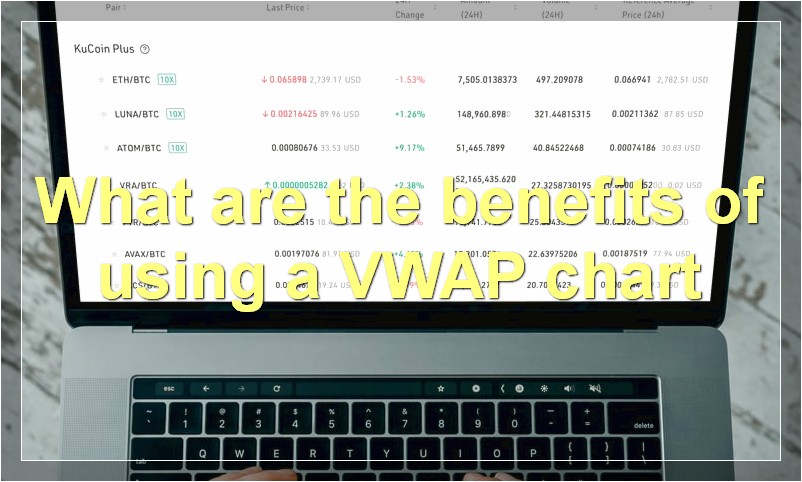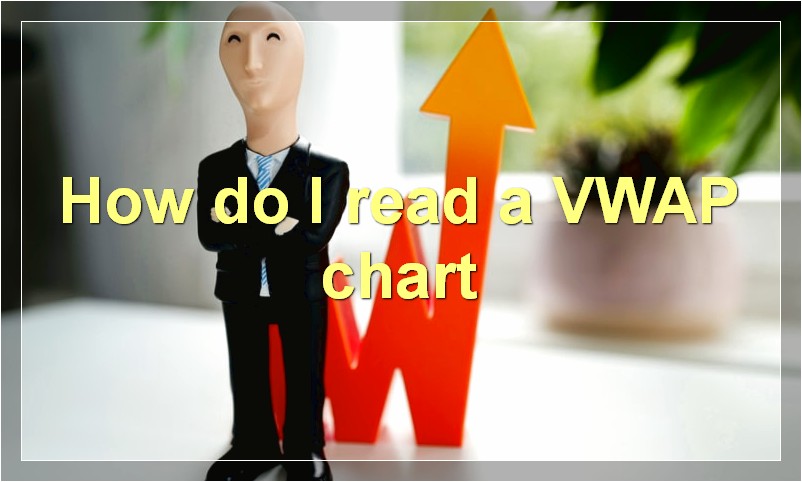Many traders use volume-weighted average price (VWAP) as a trading benchmark, but few know how to construct and interpret VWAP charts. In this article, we’ll show you how to use VWAP charts to spot trading opportunities.
What is a VWAP chart
A VWAP chart is a graphical representation of the volume-weighted average price (VWAP) of a security over a given period of time. The VWAP is calculated by taking the summation of all trade prices multiplied by their respective volumes, and then dividing by the total number of shares traded. The VWAP chart thus provides a visual representation of how the average price of a security has fluctuated over time, and can be used as a tool by traders to make informed decisions about when to buy or sell.
How do I read a VWAP chart

To read a VWAP chart, you will want to start by looking at the volume bars. The volume bars represent the number of shares that have traded during that particular time period. The taller the volume bar, the more shares that have traded.
Next, you will want to look at the price action. The VWAP is represented by a line on the chart and you can use this line to see how the price has been moving. If the price is above the VWAP line, then it is considered to be bullish and if the price is below the VWAP line, then it is considered to be bearish.
Finally, you will want to look at the momentum indicators. The two most popular indicators are the RSI (relative strength index) and the MACD (moving average convergence divergence). These indicators can help you see if the price is likely to continue in the same direction or if it might reverse.
Overall, the VWAP is a helpful tool that can be used to make trading decisions. It is important to remember that no single indicator is perfect and that you should always use multiple indicators before making any trades.
What do the different colors on a VWAP chart represent
The VWAP chart is a technical indicator that is used by traders to measure the average price of a security over a specific period of time. The different colors on the VWAP chart represent the different time periods that are being measured. For example, the blue line represents the VWAP for the past 20 days, while the red line represents the VWAP for the past 10 days.
What are some common uses for VWAP charts
Some common uses for VWAP charts include identifying intraday support and resistance levels, measuring momentum, and determining the overall direction of the market. VWAP can also be used as a trailing stop loss indicator.
How can VWAP charts be used to identify trading opportunities
Trading opportunities can be identified by using VWAP charts to look for deviations from the mean. If the price is trading significantly above or below the VWAP, it may be an opportunity to buy or sell. The VWAP can also be used as a trailing stop, to help lock in profits on a trade.
What are the benefits of using a VWAP chart

If you’re an active day trader, you know that timing is everything. Making split-second decisions based on market conditions can mean the difference between success and failure. That’s why having a reliable tool to help you make those decisions is essential.
One such tool is the VWAP chart. VWAP, or volume-weighted average price, is a statistical measure that shows the average price of a security over a given period of time. It’s calculated by taking the sum of all traded prices divided by the total number of shares traded.
VWAP is a popular tool among traders because it can help you gauge the market’s overall direction and momentum. It can also be used to identify potential support and resistance levels.
In addition, VWAP can be helpful in making execution decisions. For example, if you see that the market is trading above VWAP, it may be a good time to buy. Conversely, if the market is trading below VWAP, it may be a good time to sell.
Of course, VWAP is just one tool in your arsenal. As with any technical indicator, it’s important to use it in conjunction with other factors before making any trading decisions.
How does the VWAP indicator work
The VWAP indicator is a tool that traders use to help assess the market. It is used to measure the volume-weighted average price of a security over a given period of time. This can be helpful in a number of ways, including helping to identify trends and potential entry and exit points. The VWAP indicator can be used on any time frame, but is most commonly used on daily charts.
To calculate the VWAP, you first need to find the volume-weighted average price for each period. This is done by multiplying the price of each trade by the number of shares traded. This gives you the total value of all trades for that period. You then divide this by the total number of shares traded during that period. This will give you the volume-weighted average price.
The VWAP indicator can be used as a standalone tool or in conjunction with other indicators. When used alone, it can help to identify overall trends in the market. It can also be used to confirm other indicators, such as support and resistance levels. When multiple indicators are used together, they can provide a more complete picture of the market and help to make more informed trading decisions.
What are some commonVWAP trading strategies
There are a few common VWAP trading strategies that are used by traders. The first is to use VWAP as a measure of the market’s overall sentiment. If the market is trading above VWAP, it is generally seen as bullish, and if the market is trading below VWAP, it is generally seen as bearish. Another common strategy is to use VWAP as a point of entry or exit for trades. For example, a trader might enter a long position when the market trades below VWAP, and exit the position when the market trades back above VWAP. Lastly, some traders use VWAP as a trailing stop loss. This means that they will place their stop loss at a certain percentage below VWAP, and if the market moves against them, they will exit the trade when their stop loss is hit.
How can I create a VWAP chart in Excel
If you’re looking to create a VWAP chart in Excel, there are a few things you’ll need to do. First, you’ll need to gather the data that you want to use to create yourVWAP chart. This data can be found in a number of places, but the easiest place to find it is on a stock’s website. Once you have your data, you’ll need to input it into an Excel spreadsheet.
Next, you’ll need to create a couple of formulas that will help you calculate the VWAP. The first formula is the VWAP formula itself, which is:
=Sum(C * V)/Sum(V)
where C is the price of the security and V is the volume traded.
The second formula you’ll need is the standard deviation of the prices, which is:
=STDEV(C2:Cn)
where C2:Cn is the range of cells that contain the prices.
Once you have these formulas entered into your spreadsheet, you can then create your VWAP chart. To do this, simply select the cells containing your formulas and then click on the “Insert” tab and select “Line.” From there, you can choose how you want your VWAP chart to look and then input your data.
What are some common mistakes traders make when using VWAP charts
Some common mistakes that traders make when using VWAP charts include failing to take into account the changing nature of volume throughout the day, not accounting for trading costs, and not using VWAP in conjunction with other technical indicators. These mistakes can lead to sub-optimal trading decisions and missed opportunities.

